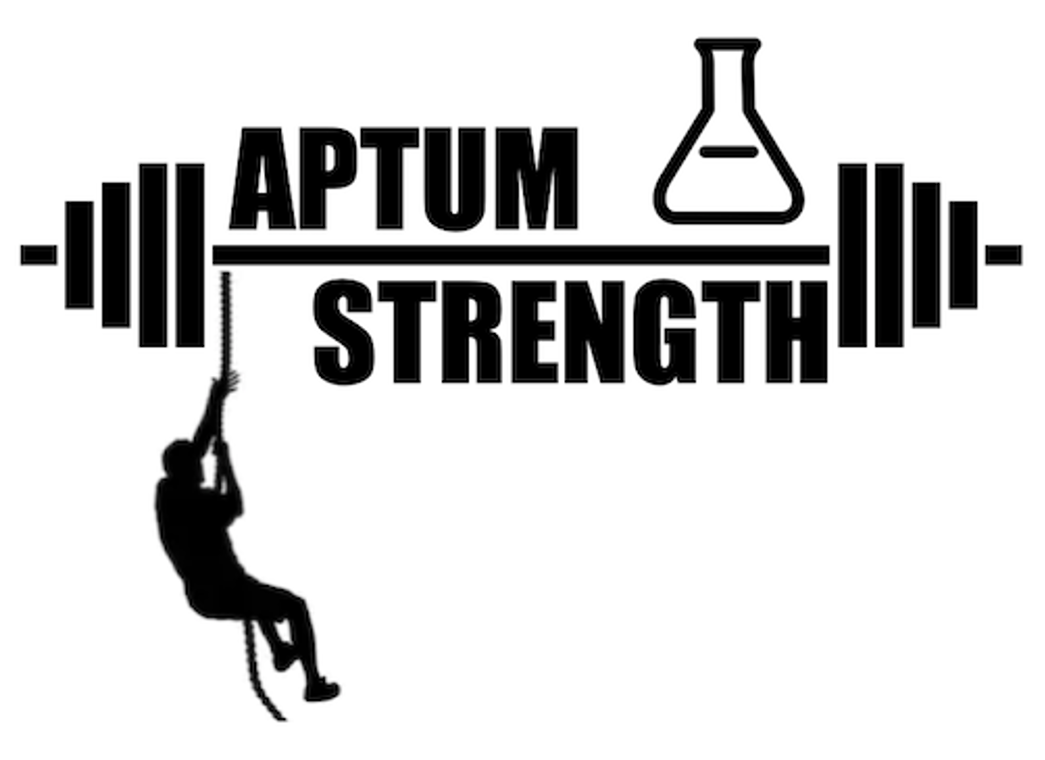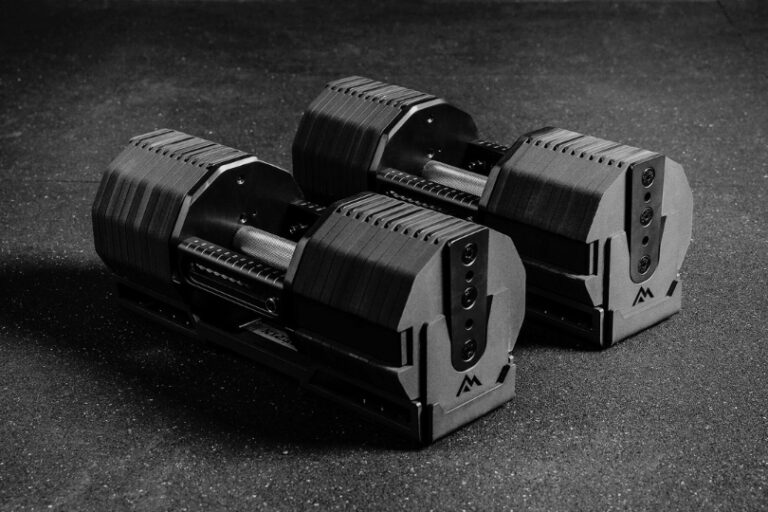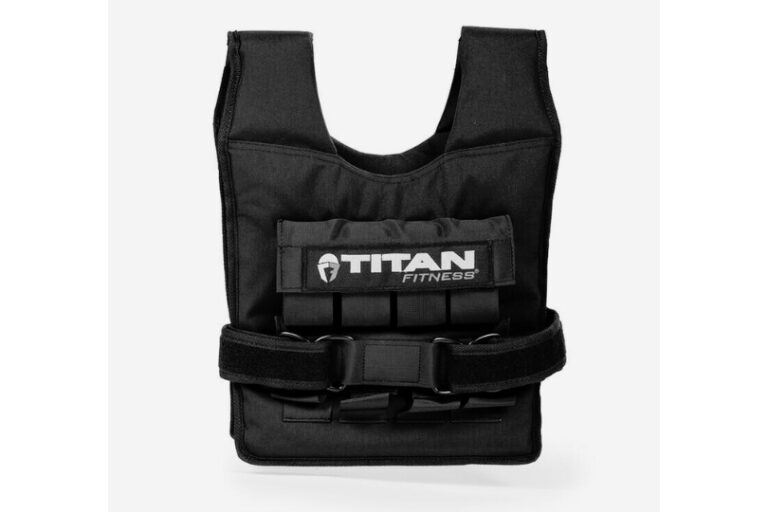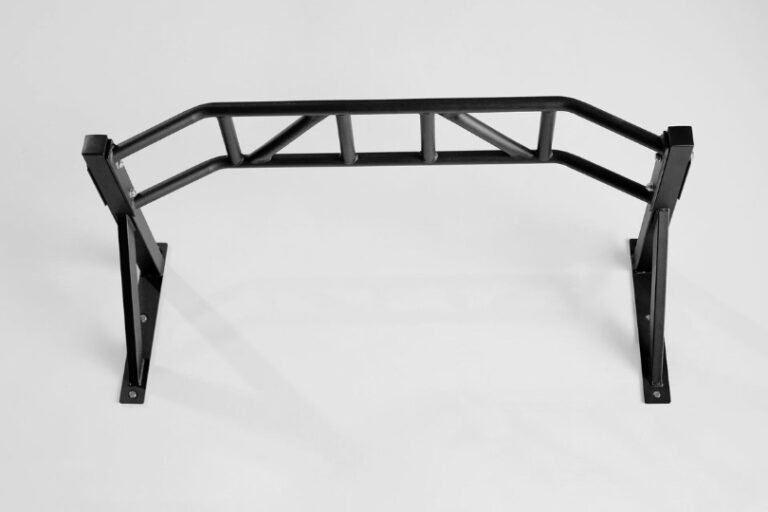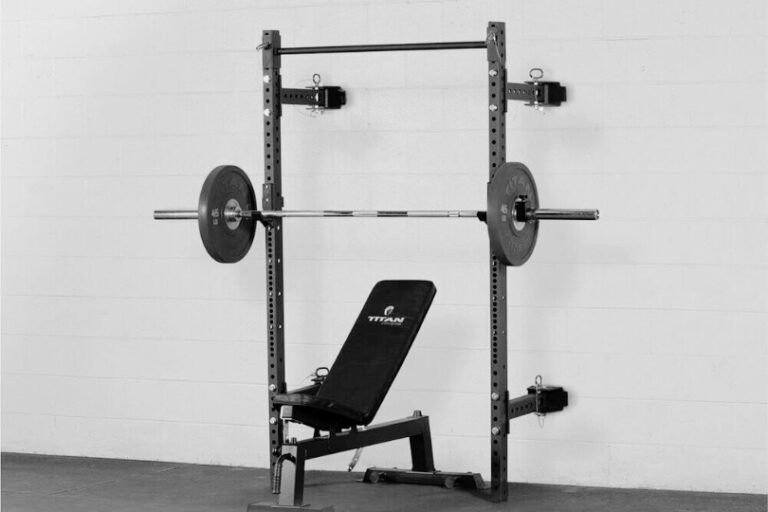Six Steps to find the Minimum Effective Dose for your training goals
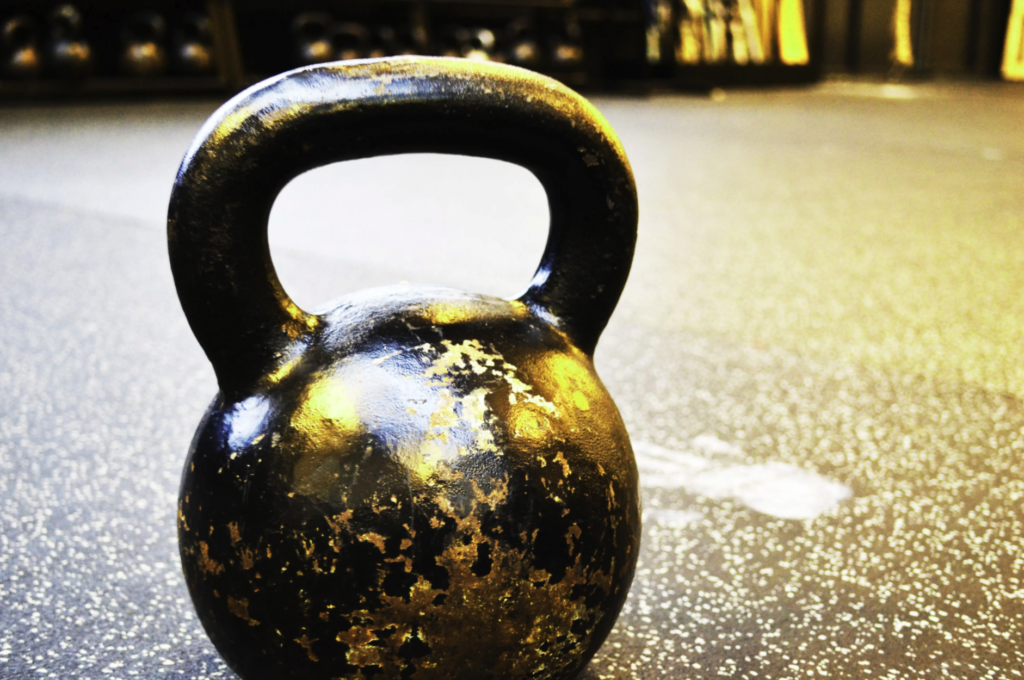
Finding Time
What is a training minimum effective dose (MED) and what are some reasons you might want to find it? If you can relate to the story below, MED might be a technique you should consider.
Last December, as the holiday season was in full swing, I found it difficult to find time for the gym. Going to the gym is a primary way for me to fight stress, and I found it frustrating every time I planned, and failed, to make it to the gym. Instead of enjoying a stress-shredding sweat- and endorphin-induced high, I found myself eating and drinking too much and sleeping too little.
On one particular day, when my evening was clear, my gym bag was packed, and my workout planned, I got a last-second invite to a party just as I was leaving work at 6:00 pm. “Leave at 7:00?” my friend and co-worker, who lived close-by, asked. So much for my workout plans, I thought. “Sure,” I said, disappointed at another gym session lost.
I walked home — instead of to the gym — walked in the door of my apartment, and set my bag down. I looked at the 24kg kettlebell on the floor and looked at my watch. I had 45 minutes before I had to meet my friend. I did some quick math: 5 minutes to change and start my workout; post-workout I’ll need 5 minutes to shower, 5 minutes to get dressed, 5 minutes to walk and meet my friend. That leaves me… 25 minutes
Something’s better than nothing, I thought. I changed into some workout clothes and got started. 25 minutes later I set the kettlebell down and felt like I’d just completed a 90-minute workout.
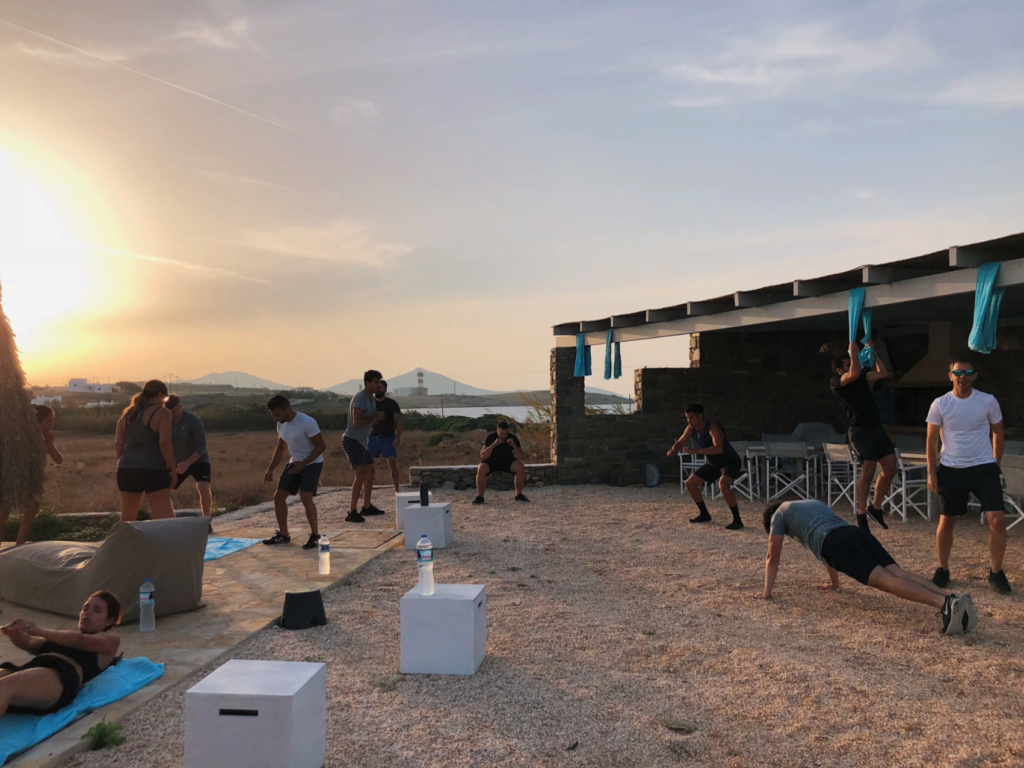
I’ve always had a fairly regimented fitness regime, and I don’t like it when something gets in the way. Unlike many people, who consider going to the gym a necessary chore, I actually enjoy it. Most of my routines take around one hour, but every now and then, I put in a long training session of close to two hours. Usually on the weekends, and followed up with a hot-cold cycle between the sauna and ice bath for recovery. It’s my way of clearing stress and resetting my mind. I always feel great afterward.
But, it does take up a huge chunk of my day. And with long, intense workout sessions like that, if I slip on my recovery — if I don’t get the right amount of nutrition, or if I don’t get a full 8-hours of rest — I feel totally exhausted. Even though I enjoy training, I often wonder: could there be a way to be more efficient with my time? Could I get the same training benefits in half the time? Or even less? Could I replace my 2-hour Saturday gym session with a 25-minute kettlebell routine?
For soldiers, police, firefighters, and other first-responders who need to maintain a high degree of tactical fitness while still being ready to perform their duties, the concept of minimum effective dose can be a valuable tool.
How Much is Enough?
Enter the idea of minimum effective dose (MED).
I first came across the idea of MED in Tim Ferris’s The 4-Hour Body. Tim describes it this way: “the smallest dose that will produce a desired outcome.” The term originates in medicine, where there are many reasons for wanting to find the minimum dose necessary to achieve a desired result. Nearly every medicine — over the counter or prescription — has a note to the effect of: may cause nausea, vomiting, light-headedness, swelling rashes, constipation, or diarrhea. The more you take, the more you increase the likelihood and severity of those side effects.
Tim extends the idea of MED to fitness training. All training has risks and potential side effects. The more you train, the more those risks, and any negative side effects, increase. Risks include things like injury, both acute and overuse; and diminishing — and eventually negative — returns on your effort. Not to mention that training takes up your precious time — so why spend more than you have to?
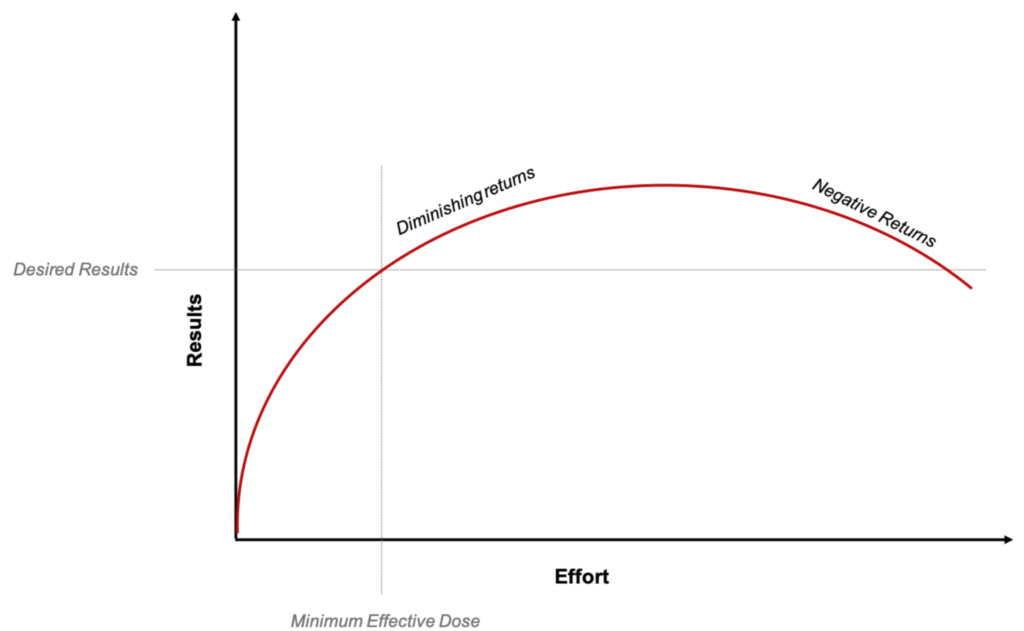
Consider the graph above showing the relationship between effort and results. It could apply to many endeavors in life — running a business, or learning a foreign language — but today we’ll discuss how it applies to training. In particular, what it means for finding the minimum effective dose for your training goals. Let’s take a look at a few characteristics of the graph and what it tells us.
- The graph initially rises very quickly. This means that the initial effort you put in produces disproportionately larger results. In fact, by the time you’ve put in only 20% of the possible effort, you may already achieve 80% of the possible results. This phenomenon is commonly referred to as the Pareto Principle or the 80/20 rule.
- Increasing effort produces diminishing returns. This means that the effort required to add another 20 pounds to your bench press will be greater than the effort required to add the first 20 pounds to your bench press.
- The graph is an inverted U. This means that not only will your incremental increases in effort produce ever-decreasing results, at a certain point, more effort will actually produce negative returns. (For more on the inverted U, check out Too Much of a Good Thing: The Challenge and Opportunity of the Inverted U by Barry Schwartz and Adam Grant).
While the concept of Minimum Effective Dose can theoretically apply to any desired result on the graph, what we’re really looking for is a point on the graph — a point in your training — where the results produced are still larger than the effort put in.
In The 4-Hour Body, Tim actually reduces it to two 30-minute training sessions a week — and hence the 4 hours total required in a month to build and maintain the body you want. Keep in mind, though, that this won’t apply to everyone. As Tim states, “If you are already at 5% bodyfat or bench-pressing 400 pounds, you are in the top 1% of humans and now in the world of incremental gains. [Minimum Effective Dose] is for the other 99% who can experience near-unbelievable gains in short periods of time.”
The sort of extreme minimalism promoted in The Four-Hour Body may not apply to everyone, but based on the definition of Minimum Effective Dose— the smallest dose that will produce a desired outcome — a Minimum Effective Dose exists for every desired outcome, from maintaining basic levels of health to winning Olympic gold.

With that in mind, here are six tips to help find the Minimum Effective Dose for your training goals.
6 steps to find your training minimum effective dose
1. Be clear about your desired results.
Be as comprehensive as you can about your desired results. Be both quantitative and qualitative if you can. Is your goal performance-related: squat 300 pounds, deadlift 400 pounds? Enter a competition? Win a competition?Is your goal related to appearance and body-fat? Lose 10 pounds? Achieve 8% body fat?
Keep in mind that If you want to look like Brad Pitt in Troy, you probably won’t get there with 1-hour a week.
2. Measure where you’re at now
Take measurements related to your goals: Want to achieve a certain bodyweight? Step on a scale. Want to get stronger? Find your current 1-rep-max for the big lifts. Want to be in all-around better shape? Try one of Mountain Tactical Institute’s fitness tests.
Also, measure how much time your currently spending on training and decide how much time you’d like to spend.
3. Leverage high pay-off movements
If you’re interested in achieving the maximum results for limited time and effort, you’ll want to focus on whole-body movements that produce a systemic (not just local) reaction. John Rusin has listed six major categories for all foundational exercise movements: squat, hinge, lunge, push, pull, and carry. Include at least one movement from each category in your routine.
High Intensity Interval Training (HIIT) has also been shown to be more time-efficient for producing positive health improvement.
4. Hone your supporting efforts
If you want to get the most out of your limited time in the gym, the most important thing you can do is hone your supporting efforts: diet, recovery, and focus.
Experts debate the exact ratio of the importance of diet-to-exercise in achieving results — is it 50–50, 60–40, even 90–10? But whether it’s athletic performance or weight-loss that you’re after, diet is a critical component that can help fuel your workouts and help you recover faster.
Recovery is perhaps equally important since this is when the body repairs the micro-damage done during exercise, rebuilding the body to be stronger. Sleep is an important component of recovery. You can also consider incorporating active recovery techniques such as foam rolling or contrast therapy.
5. Measure feedback and Iterate
While Tim Ferris provides a specific prescription of 30 minutes, 2x a week, the reality is that Minimum Effective Dose will be different for everyone and their training goals. Finding your MED will probably require some experimentation.
Try bracketing as a way to find your Minimum Effective Dose:
- Estimate your Minimum Effective Dose.
- Go slightly under your estimated Minimum Effective Dose. Observe results.
- Go slightly over your estimated Minimum Effective Dose. Observe results.
- Repeat until you think you’ve found your Minimum Effective Dose.
6. Recognize that it will be a moving target
As your body changes and your goals change, so will your Minimum Effective Dose. The Minimum Effective Dose that gives you a 300-pound bench press and 8% body fat at age 28 may not produce the same results when you’re 38.
As the Greek philosopher, Heraclitus said, “No man ever steps in the same river twice, for it’s not the same river, and he’s not the same man.”
Conclusion
Finding the minimum effective dose for your training goals is a challenging, but worthwhile pursuit. It requires focus and discipline — stripping away unnecessary, redundant, and superfluous components until you’re left with only the essential. And the essential may fit into that tiny window between work and your next holiday party.
